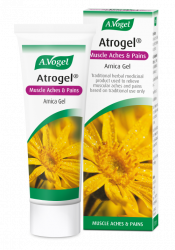Dealing with runner’s knee
If you are concerned about having runner's knee, this blog has all the necessary information to help you manage the problem.
Here I will answer the following questions on the issue:
- What is runner's knee?
- What causes runner's knee?
- How do you know if you have runner's knee?
- How do you fix runner's knee?
- What treatments are there for runner's knee?
What is runner's knee?
Runner's knee occurs when the kneecap (patella) becomes inflamed and irritated where it meets the thighbone. This can result in a sharp pain, or a dull ache which is generally worse either during or after running.
What causes runner’s knee?
The term runner's knee is used because the discomfort is most common amongst this group of exercise-goers. The high impact nature of running, and the fact it is a very popular sport, means it's an issue many people have to deal with.
However, runner's knee can occur in anyone doing regular exercise that involves bending the knee joint, such as skiers or cyclers, or those putting the joint under a lot of impact, such as hikers.
How do you know if you have runner’s knee?
As mentioned, runner's knee is most likely to develop in someone doing a lot of high impact exercise. However, I would recommend that you get a diagnosis confirmed by a physio or doctor just to be sure that this is the issue at play.
You should also see your doctor straight away if the pain is very severe or there is swelling.
How do you fix runner’s knee?
There are several factors that can contribute to the development of runner's knee. Amending these problems can bring some relief, so what should you be aware of?
Preparation
Remember to warm up and cool down before and after running to reduce the risk of injury.
Walking briskly for 5 minutes before you start running will warm your body up, but don't forget to stretch too! A brisk 5-minute walk and gentle stretching session after running will also smoothly slow your body down and prevent stiffness, muscle ache and cramps.
Follow our warm-up and cool down exercises here:
Running surface
The surface on which you are running can have a big impact on your joints. If you tend to run on hard surfaces, such as concrete or a treadmill, this puts the knees under a steady amount of impact.
Top tip: To avoid this, try switching to a softer surface, such as grass, dirt or sand, or purchase more cushioned running shoes that are specifically designed for road running.
Footwear
Wearing unsuitable shoes will fail to provide your knees with sufficient support. Running shoes should have soles that provide plenty of shock absorption, which is particularly important if you often run on treadmills or concrete roads.
Top tip: Some sports shops can assess the way you run and suggest specific running shoes and insoles to suit your needs.
Distance
Long-distance running can cause knee pain because of the sheer length of time the knee is being made to repeat the same motion and absorb impact.
Top tip: Try running shorter distances more frequently. If this is not possible, try to improve your running habits in other ways. For example, purchase supportive running shoes, run on softer ground, or try some of our treatment methods detailed below.
Weight
Being overweight can also cause runner's knee because it puts added pressure onto the knee joints.
Top tip: Before taking up running, try to lose weight using lower impact exercises such as fast-paced walking. Weights may also be a good idea, as well as gentler exercise like yoga.
Keep it varied
For most people, variation will help prevent injury. If you regularly experience knee pain from running, one of the simplest solutions is to incorporate different kinds of exercise into your routine.
Instead of doing the same run five times a week, try switching one or two of those days for cycling, an exercise class or weights. This helps build fitness across the whole body, engages a wide range of muscles, and prevents injury from the repetitive motion of running.
Top tip: swimming is a really good option for anyone with knee pain, as the water takes all of the impact off the joints. Plus, swimming is an excellent activity that gives your whole body a good workout.
Are you a beginner?
Being a beginner can also increase your risk of developing runner's knee.
If you are new to running, your body may take some time to adapt to this new form of exercise and, as the knees will not be used to the repetitive motion involved, they can begin to ache.
In addition, the muscles around your knee may not be very strong if you are a beginner so they may not be able to support and cushion the knee sufficiently.
Top tip: Try to ease into running slowly by running regularly for shorter periods of time. So, instead of trying to run once or twice a week for an hour, try three or four times a week for 20 minutes each. If you need help easing yourself into running, try the Couch to 5K app from the NHS.
What treatments are there for runner’s knee?
So, there are a lot of things you can do to manage or prevent runner's knee, but let's now look at the possible treatment options.
Rest
If you are experiencing runner's knee it is a good idea to stop running and rest the knee until you are no longer experiencing pain. Your knee may need some time to recover from the harsh movement and sometimes this can take several weeks.
If the pain persists after one week of rest, I'd advise speaking to a doctor or physiotherapist so they can assess the level of inflammation and pain in your knee, and therefore suggest how much rest is required.
Cold compress
Using a cold compress or cold pack will help to reduce inflammation around the knee. This should reduce pain and quicken recovery time and is particularly useful if your knee pain comes on very suddenly.
Try a frozen bag of peas wrapped in a towel or a cloth soaked in cold water.
Elevating the knee at the same time can also help to reduce swelling.
Knee brace
Another option is to invest in a good knee brace to support your knees while you run. This is particularly useful for long-distance runners and people who run on concrete or treadmills.
However, be aware that using a knee brace for an extended period of time will stop the muscles from being as active as they should be and this may weaken their function and strength.
I would again advise speaking to a healthcare professional before fitting yourself for a knee brace.
Arnica
To help relieve your discomfort further, you could try an arnica gel such as Atrogel to soothe the ache in your knee. It can be used alongside any other medication and painkillers.
Devil's Claw
Although Arnica may bring quick relief from your knee pain, for persistent, long-term issues, you may wish to try Devil's Claw.
Though it takes several weeks to show its effects, Devil's Claw can help relieve muscle and joint pain. It can be used alongside painkillers.
Painkillers
Anti-inflammatory medication such as ibuprofen can help reduce inflammation and swelling. These kinds of medications should not be taken long term, however; so, consult with your doctor about how long you can use them for knee pain.
Generally speaking, painkillers only cover up the discomfort and so, to address the underlying issue, it is sometimes necessary to get the help of your doctor.
Gentle exercise
To give your knee a break from the impact of running, you could turn to gentle, restorative exercise.
We have some exercises for knee pain to keep your knees and legs strong, so you may wish to give these a try. Alternatively, a physiotherapist may be able to offer some exercises tailored to your abilities.
For more information on knee pain, head to the knee pain page. If you have any more questions regarding knee pain, don't hesitate to ask me in my Q&A service.
Originally published 1 July 2016 (updated on 11 August 2020)









